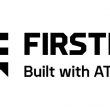Provigent raises $16 million in funding round
System-on-a-chip vendor Provigent this week announced a $16 million fourth round of financing that will fund the company until it becomes profitable, according to company CEO Dan Charash.
In an interview with MRT, Charash said the latest round means Provigent has raised a total of $21 million and can claim Globespan Capital Partners as an investor, joining existing investors Sequoia Capital, Pitango Venture Capital, Magnum Communications Fund, Ascend Technology Ventures, Delta Ventures, and Andrew Viterbi, co-founder of Qualcomm.
Provigent’s system-on-a-chip solutions are used in the point-to-point broadband wireless markets, primarily in system vendors’ microwave backhaul solutions deployed by Tier 1 wireless carriers that would prefer not to depend on T1s and other wired connectivity provided by wireline competitors, Charash said.
With the additional funding, Provigent will be better positioned to bolster its 60-person staff to provide support for its growing customer base and continue research to improve silicon integration of its product, Charash said.
“Because we have a very broad customer base of 30 customers, including a very significant part of the first-tier market, this round of financing should be all we need to continue on forever,” he said. “The existing design wins are enough to drive the company to profitability.”
While Provigent does not believe the company will need additional private funding rounds, Charash said the fabless semiconductor firm would consider an initial public offering in the future.
Through Provigent’s silicon-integration and algorithmic efforts, point-to-point backhaul systems can deliver data rates of 622 MB/s for both transmission and reception in a chip, Charash said. Previously, point-to-point systems were housed in packages the size of a pizza box and were not as power efficient, spectrally efficient or as reliable, because there were more parts that could potentially fail, he said.
“Previously, they had to have multiple components—many times, an entire board—to do the things we do in a single chip,” Charash said. “It’s a roadmap of silicon integration. It’s not just a one-time thing; it’s really a continual process of de-costing the system.”

















